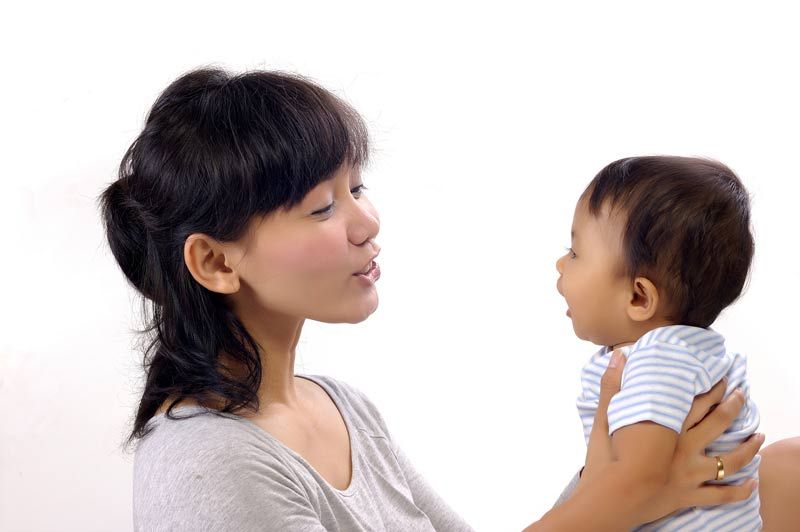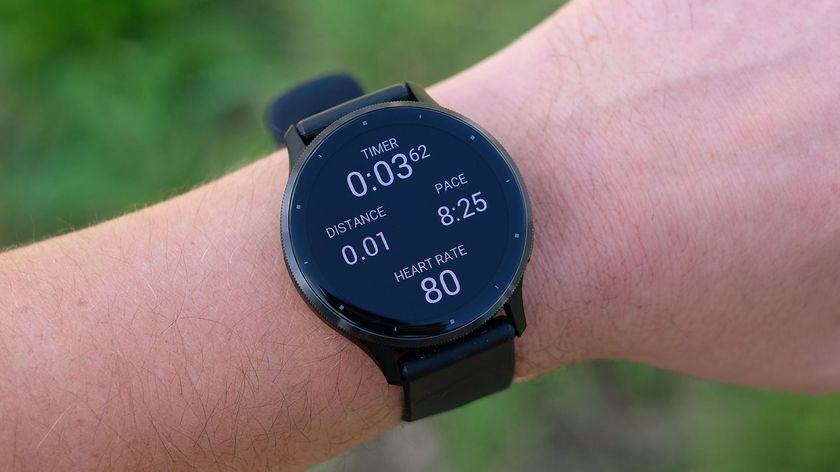Um, Uh … Speech Stumbles Help Toddlers Learn New Words

Stuck with a word on the tip of your tongue when talking to a toddler? Don't worry — a new study finds that hesitant speech may help the kid learn new vocabulary.
Language disfluencies, or the "ums" and "uhs" that pepper everyday speech, give young children a clue that the next word coming will be a new one, according to the study, which was published online Thursday (April 14) in the journal Developmental Science. These clues may help children link new words with new objects in their environment.
"Very young children who don't have many words in their vocabulary have learned that disfluencies contain information that is useful in telling them what a speaker is going to refer to next," study researcher Celeste Kidd, a graduate student in brain and cognitive science at the University of Rochester, told LiveScience.
Uh, um …
"Uh" and "um" might seem like useless noises, but previous studies have found that they convey lots of information, Kidd said. For example, when adults hear these filler words, they expect that the next word will introduce a new idea into the conversation.
The researchers wanted to know if young children also understand the information conveyed by "um" and "uh." They conducted three identical experiments on three groups of 16 toddlers apiece. In the first group, the toddlers were around 2 1/2 years old. The second and third groups consisted of 2-year-olds and 1 1/2-year-olds, respectively. [Read: Why Bilingual Babies Reveal About the Brain]
Each toddler would sit in front of a screen and watch as two objects, one familiar (such as a ball) and one made-up (such as a pretzel-like shape the researchers dubbed a "wub"), flashed on-screen. The first two times, a voice would say "I see the ball" or "Look at the ball," naming the familiar object. The third time, the voice would say "Look at the, uh…" and then name either the familiar or made-up object, or say the same phrase without the "uh."
Sign up for the Live Science daily newsletter now
Get the world’s most fascinating discoveries delivered straight to your inbox.
"We wanted to see where they looked during the 'uh' part," Kidd said. An eye-tracker recorded where the toddlers gazed. If they looked at the new object when they heard "uh," it would be evidence suggesting that disfluency primed them for a new word.
New words
That's exactly what the researchers found, Kidd said. When the speaker fumbled for the word, kids in the 2 1/2-year-old group looked expectantly at the new objects 70 percent of the time. When the speaker's sentence started out fluently, kids gazed at both the old and new objects equally. (After the speaker spit out the word, kids always looked at the right object, Kidd said.)
The ability to use disfluencies as learning clues seems to develop over the second year of life, Kidd said. The youngest toddlers didn't use the disfluences at all, and the 2-year-olds showed only a slight tendency to use them. It wasn't until age 2 1/2 that kids picked up on disfluencies reliably.
One possible alternative explanation, Kidd said, is that kids mistook "the, uh …" as the name of the new object and that's why they looked at it. But that is unlikely, she said, because if kids thought the first unfamiliar object was a "the, uh," they wouldn't have continued to tune into all of the other unfamiliar objects when they heard the same speech stumble. The age-related development of attention to "uh" also suggests that the kids understand what they're hearing, Kidd said.
Researchers still don't know what kids understand about "um" and "uh." It could be that they know "ums" and "uhs" mean someone is thinking about a hard-to-recall term. Or maybe they just know that the sounds tend to precede words they've never heard before.
"Understanding which one of those two it is probably an interesting next step," Kidd said.
You can follow LiveScience senior writer Stephanie Pappas on Twitter @sipappas.

Stephanie Pappas is a contributing writer for Live Science, covering topics ranging from geoscience to archaeology to the human brain and behavior. She was previously a senior writer for Live Science but is now a freelancer based in Denver, Colorado, and regularly contributes to Scientific American and The Monitor, the monthly magazine of the American Psychological Association. Stephanie received a bachelor's degree in psychology from the University of South Carolina and a graduate certificate in science communication from the University of California, Santa Cruz.










